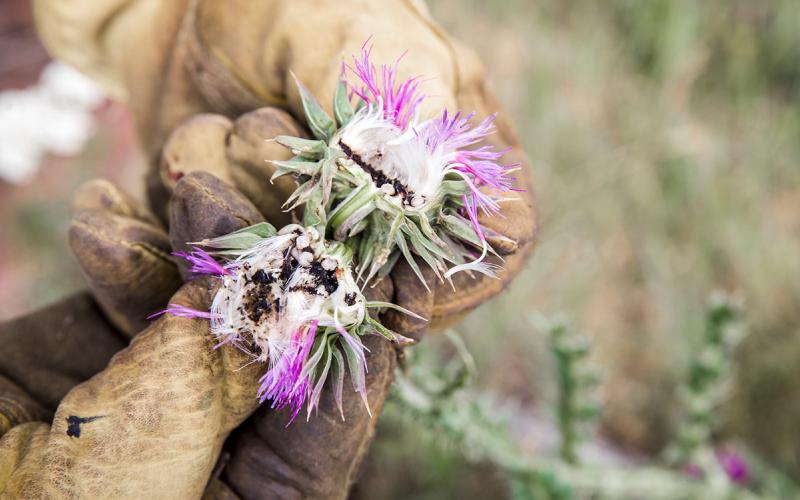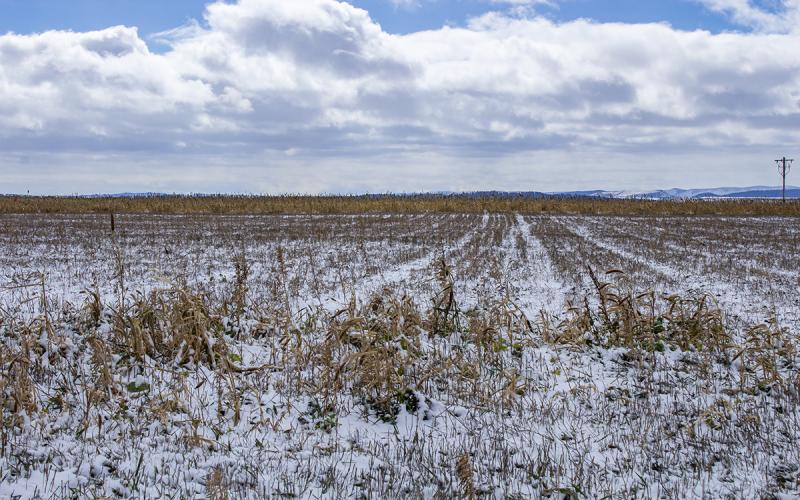What is a Plant Growth Regulator?

Hormones or plant growth regulating compounds are naturally produced by plants at different growth stages to regulate several growth and development functions, such as cell elongation, root growth, flowering, ripening, etc. Some major naturally occurring plant hormones are- auxins, gibberellins, cytokinins, ethylene and abscisic acid. Even the small changes in concentration of these compounds can have large effects on their functions in plants. Plant Growth Regulators, sometimes simply called PGRs, are human-applied chemicals that manipulate the hormone functions in plants.
Plant Growth Regulator on Oats
A newer PGR that has widely been used in recent years on cereal grain is Trinexapac-ethyl, which is marketed with the brand name Palisade (Syngenta, Trinexapac-ethyl 12%). The PGR Palisade interrupts the Gibberlic Acid (GA) function that naturally promotes cell division and elongation in plants, thus helping reduce plant height. Since oats are more prone to lodging compared to other small grains, PGR application can help prevent yield loss by reducing plant height and improving plant standability and harvestability.
Timing and Dose
The Palisade product is labeled for all major cereal grains, such as wheat, barley, oats, triticale, rye and rice. It can also be used on grasses and sugarcane. The labelled rate for cereals is 10.5 to 14.4 fluid oz/ac. The growth stages for application on the label is Feekes Stage 4 (pseutostem elongation) to Feekes Stage 7 (2nd node visible). The rate can also be split within the stated growth stages without going beyond the maximum labelled rate of 14.4 oz/a (when both application rates are added).
With the goal of reducing height and lodging, SDSU Extension initiated field experiments in 2015, however, when applied at maximum rate at Feekes Growth Stage 4 to Feekes Growth Stage 5, we did not notice any height (or lodging differences). This led to a study conducted in 2017 and 2018 to evaluate the effects of dose and timing of Palisade on oats. During both years we used various rates of Palisade at different growth stages to study the ideal application timing and dose. Dose and timing variables used were 7.2 oz/a at Feekes 5, 6 and 7; 7.2 oz/a at Feekes 5 and Feekes 7; 10.5 oz/a at Feekes 5, 5 and 7; 10.5 oz/a at Feekes 5 and Feekes 7; and 21 oz/a at Feekes 5, 6 and 7. The experiment consisted of a ‘control’ treatment that did not receive any Palisade and other rate and growth stage treatments that were assigned in Randomized Complete Block (RCB) design with three replicates. Height, lodging, and yield notes from each year are shown in Table 1 below. NOTE: 21 oz/a is off-label and only used for experimental purposes.
|
|
|
||||||
|---|---|---|---|---|---|---|---|
|
|
(oz/a) |
(in) |
(bu/a) |
|
(oz/a) |
(in) |
(bu/a) |
| F7 |
|
|
|
F6 |
|
|
|
| F7 |
|
|
|
F6 |
|
|
|
| F5 and F7 |
|
|
|
F7 |
|
|
|
| F7 |
|
|
|
F5 |
|
|
|
| F6 |
|
|
|
Control |
|
|
|
| F5 |
|
|
|
F5 and F7 |
|
|
|
| Control |
|
|
|
F7 |
|
|
|
| F7 |
|
|
|
F5 and F7 |
|
|
|
| F5 and F7 |
|
|
|
F7 |
|
|
|
| F5 |
|
|
|
F7 |
|
|
|
| F5 |
|
|
|
F5 |
|
|
|
| F6 |
|
|
|
F6 |
|
|
|
| F6 |
|
|
|
F6 |
|
|
|
| F6 |
|
|
|
F5 |
|
|
|
| F5 |
|
|
|
F5 |
|
|
|
| LSD (0.05) |
|
|
LSD (0.05) |
|
|
||
| C.V. |
|
|
C.V. |
|
|
||
*descending order according to yield.
F5, F6, F7= Feekes growth stages F5 (tillers strongly erect) F6 (first node visible), F7 (2nd node visible).
LSD 0.05= Least Significant Difference values for numbers in the same column to be statistically different;
NS= numbers in the same column are not statistically different at 0.05 probability level.
Conclusions
- Both years were relatively warmer and drier than normal. June 2017 and May 2018 were significantly warmer than usual. This caused plants to be shorter and resulted in no noticeable lodging.
- PGR significantly reduced plant height in both years.
- Although not strongly conclusive, applying PGR at the rate of 12 to 14 oz/a at Feekes Growth Stage 6 or when first node is visible just above the ground surface can have the maximum effects on oats height and lodging.


